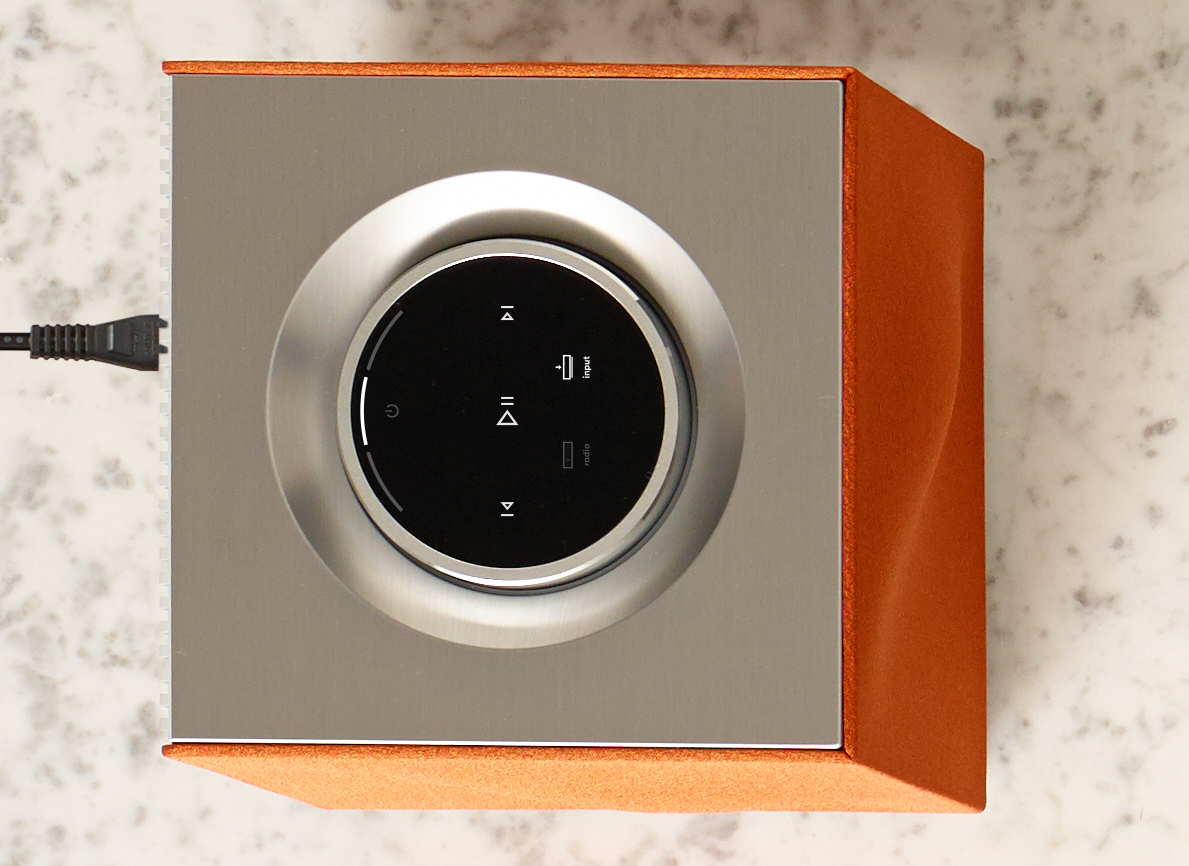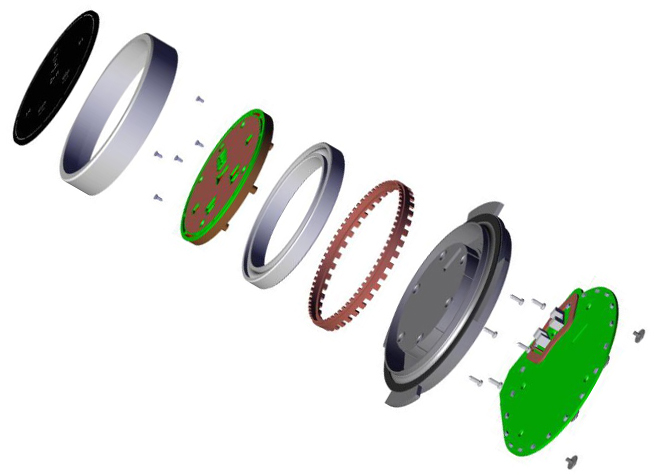The Mu-so touch panel control interface has become one of the most iconic on-product systems in high end audio. Based along similar visual lines to the volume control of our reference Statement amplification system, the Mu-so dial is unique in its versatility, beautiful white illumination and smooth volume control. This project took a year to perfect and many tests and re-tests along the way. We spoke to R&D’s Simon Matthews, Steve Sells and Paul Neville about some of the technical and design aspects of the creation process to get under the skin of our favourite UI.

Mu-so’s Control Interface - Building a Masterpiece
Getting under the skin of our favourite UI..

'As with Statement, I wanted to place volume ‘front and centre’ to encourage the child in us all to touch and play.'
What was your design brief?
SM: First and foremost I wanted to place volume adjustment at the heart of the control of the product. Volume unleashes the music and a precision volume dial communicates tactile precision which in turn relates to musical precision. As with Statement, I wanted to place volume ‘front and centre’ to encourage the child in us all to touch and play.
PN & SS: Our design brief was to design a buttery smooth volume control with a stationary touch display in the centre which would be an intrinsic part of the overall experience of Mu-so.
Achieving this would focus the entire user interface (UI) in one place, using our trademark industrial design to give the interface a friendly but modern appeal and a completely unique look with ties to Naim’s heritage, not to mention a classic touch of class.
Why did you decide to create a UI rather than just a volume control for Mu-so?
SM: Although Mu-so has a wonderful app to control all functionality it is also important that a customer can gain access to all core functionality. In placing a touch display inside the volume dial I focussed all product functionality into one contained area. This ‘focus’ provides our users with really clear and intuitive design and also gives us a user interface which can be easily understood when placed on other Mu-so family products (Mu-so Qb). A key design goal is to ensure that a Mu-so user will be able to use a Qb without hesitation or instruction.

What is a Rotary Encoder?
PN & SS: The rotary encoder is the rotary control for ‘fly by wire’ digitally controlled analogue volume controls, as seen in Mu-so and Mu-so Qb. The encoder turns a rotary movement into a series of electrical pulses which are used to control the volume control one step at a time.
Mu-so and Qb’s volume controls have 164 pulses per revolution, or in other words you get a pulse every 2.2 degrees. We chose to ignore some pulses to make the speed at which the volume raises and lowers feel just right, alongside the beautiful segmented volume light.
The pulses from the encoder are sent to an ARM processor. The ARM processor looks at the pulses, counts them and determines the rotation direction. The ARM then writes a digital word to the volume control to set the exact volume level for each channel. This process is incredibly fast and can process hundreds of volume steps per second.
A Naim Designed Encoder
SS: Off the shelf encoders traditionally use a shaft in the centre that has to be turned. Having a shaft in the centre would complicate making a stationary display in the centre of the dial - gears could be used to turn the shaft freeing the centre for display but the friction in the gears would make the control feel rough and create additional friction.
Instead, to get the best possible result we started with a stationary display and wrapped a bearing around the outside, creating a contactless, frictionless interface encoder with no moving parts apart from the bearing itself. An added bonus of this system is that as the system is contactless, it won’t wear out with time and use - touching parts would also have changed the feel and spoilt the quality feel we were after.

How was it created?
We wanted to use a precision bearing for a solid smooth touch that will feel perfect every day, every year. A precision bearing will last a lifetime in this type of application. Filling the bearing with damping grease makes it feel smooth and quiet and remains the same consistency over time. We experimented with what felt like hundreds of different greases to ensure we had the right consistency to achieve the trademark buttery smooth feel.
To detect the movement, the outside of the volume ring is castellated below the surface (see exploded drawing). These castellations travel through optical switches which use an invisible light beam, which is detected when broken by the castellations. By using optical switches instead of electrical there are no parts that touch and as mentioned above, our goal was always to stay contactless. Optical switches also have a very long life due to the lack of moving parts.
The Volume Control Explained
PN & SS: Some audio products use traditional variable resistors (potentiometers) to control the volume level. These volume controls sound great but don’t offer the full control that we expect today from phone and tablet Apps. Variable resistors also can suffer poor channel balance at low volume settings and have a slightly variable frequency response at different volume levels.
Naim’s digitally controlled analogue volume control sounds great, has perfect channel balance throughout its range and has a consistent frequency response. Add that to the beautiful white system of illumination, a high-quality tactile anodised and post machined aluminium ring and you have a seamless, high quality volume control that sounds fantastic and offers a memorable user experience.

Choosing the Surface Ink
PN: The black printed surface allowed the use of white illumination for the icons and the volume segments. We went through many different versions of black ink, finding that any carbon based inks became conductive when touched: if had used the carbon black paint the conductivity would be the same as someone putting their hand over all the touch sensors simultaneously, not ideal!
Patenting the Control Interface
SS: We got a patent for the Mu-so control interface because the design is so efficient on parts and has resulted in a very smooth very long life encoder unique to Naim. We are really proud of this project and the patent reflects all the hard work that went into bringing it to life.
What was your favourite part of the project?
SM: I was really excited to arrive at a concept design which combined the volume dial with the non- rotating UI central touch control area. It felt immediately intuitive and equally importantly, it felt like a perfect platform to build a solution that could fully communicate some magic as well as control and precision. It is always a pleasure to watch the reaction of a person new to Mu-so, the touch of the volume knob and UI is always followed by a childlike smile.
PN: My favourite part of the project was working as a team with Mechanical, Electronics, Industrial Design and Software to come to the solution. Good design is team work and as a team I think we came up with the best solution possible.
It’s such a tactile object that getting the feel just right took time and fine attention to detail but was worth all the hard work.
SS: For me the best parts were getting the go ahead to do it and the immediate ideation that followed; exciting times. Then designing engineering concept behind the volume control and getting a patent awarded. It’s also very rewarding showing Mu-so to friends and customers.
Related articles
Fable today releases her much anticipated debut album Shame, out now via Naim Records.
Naim Audio, the British hi-fi specialist with 49 years of audio expertise, has added Crestron...
For sensational listening at home, discover a complete, hi-fi system: Focal's Aria K2 926...












